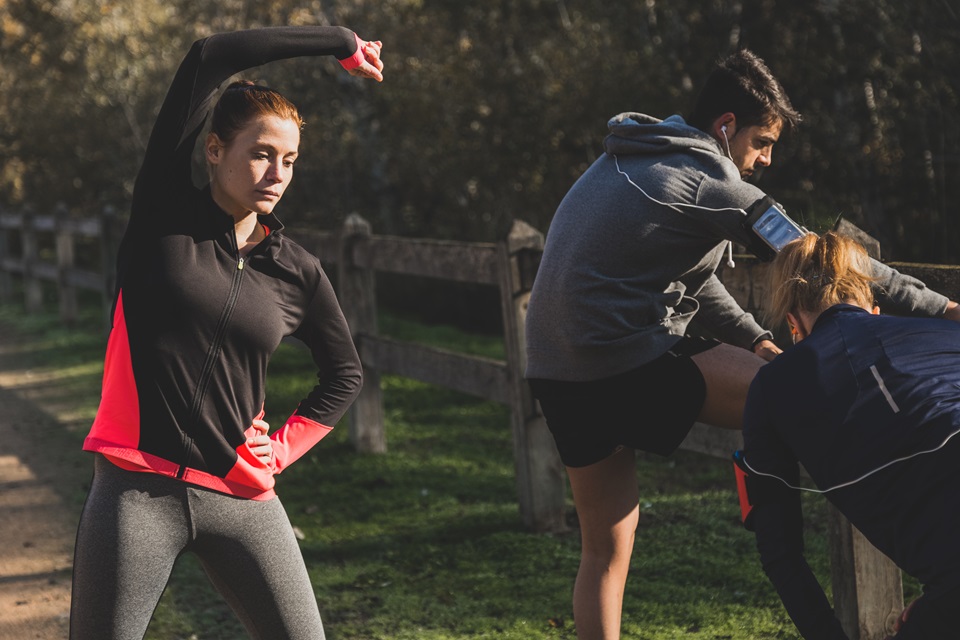Key Takeaways
- Engagement in fitness activities within a community can lead to improved physical and psychological well-being.
- Social support in fitness programs significantly boosts motivation and facilitates adherence to exercise routines.
- Strategic program design ensures that community fitness initiatives are approachable for individuals of all ages.
Understanding The Role Of Community Fitness Programs
Community fitness initiatives like those found through Denver Health and Fitness are transforming the landscape of personal health by fostering an environment where physical well-being becomes a collective endeavor. Beyond providing access to exercise equipment and facilities, these programs imbue participants with unity, inspiring shared progress and a culture of health-conscious decision-making. Aiding this collective journey, such programs emphasize education on the importance of maintaining a lifestyle punctuated by regular physical activity. They create a space where encouragement runs rampant, and every big or small success is celebrated communally. Providing more than merely group exercise classes, community fitness programs serve as a bastion for those looking to reshape their lifestyle without facing the isolation often accompanying such a personal journey. This synergy of individual goals and group support is a cornerstone of the programs, helping to foster an environment where the wayside leaves the idea of a fitness journey as a solo struggle. These programs are built on the premise that together, individuals can reach their health and wellness goals more effectively than on their own.
Comprehensive Benefits Of Regular Exercise
The advantages of integrating regular physical activity into one’s daily routine cannot be overstated. The benefits are all-encompassing, from enhancing cardiovascular health and reducing the risk of chronic diseases to boosting mental health and cognitive function. The Centers for Disease Control and Prevention have outlined the physical and mental health improvements that result from consistent exercise, including better weight management, stronger bones and muscles, and improved mental health and mood. Additionally, exercise can be a powerful antidote to stress, anxiety, and depression, thanks to the endorphins and sense of accomplishment it provides. Whether it’s a brisk walk, a vigorous aerobics class, or a rejuvenating yoga session, each form of physical activity contributes positively to overall health. Moreover, for those enduring the pangs of chronic conditions, such as arthritis or diabetes, regular exercise can be crucial in managing symptoms and improving daily functioning. Community fitness programs aim to instill in their participants this understanding and assimilation of the multifaceted benefits of exercise, thus empowering them to take a proactive stance on their health.
How Community Fitness Enhances Motivation & Accountability
Motivation can be as vital to a fitness routine as the exercise itself. Community fitness programs leverage the camaraderie inherent in their structure to keep individuals diligent in their fitness commitments. By facilitating a network of support, members find themselves part of a wellness ecosystem that champions each step forward. It is well-documented that accountability to peers can significantly improve adherence to fitness regimes, as participants often do not want to let their peers or themselves down. This collective spirit transforms the often-dreary task of exercising into a joyous social event to look forward to. Furthermore, the opportunity to partake in friendly challenges or set group goals can offer the incentive many require to remain consistent. This dynamic – the alchemy of shared objectives and mutual encouragement – can help turn the tides for those who struggle to find steady motivation in solo pursuits. This context of shared experience bolsters individual accountability and fosters a nourishing environment where new friendships might bloom, thus adding another layer of commitment to return and participate.
Accessibility Of Fitness Programs For All Ages
Health and fitness should not have barriers; they should offer a gateway for anyone, regardless of age or fitness level. This ideology underpins the design of community fitness programs, which strive to accommodate the needs of diverse populations. Be it adaptive classes for seniors aimed at enhancing balance and flexibility or more rigorous circuits designed for those seeking to push their physical limits, and these programs adapt to serve the unique needs of every individual. With such a spectrum of activities available, parents looking to regain strength postpartum, teenagers seeking to build healthy exercise habits, or older adults desiring to retain mobility and independence can all find their niche in these programs. The availability of professionally designed activities that respect each participant’s varying capabilities and limitations is a hallmark of successful community fitness initiatives. This inclusivity is pivotal, as it resonates with the message that everyone has the right to pursue and achieve their optimum state of health.
Creating A Tailored Fitness Plan Within A Community Setting
The essence of community fitness programs extends beyond group classes and into personalization. Although the setting is inherently social, individuals’ unique needs are not overshadowed. Participants can often consult professional trainers or facilitators to customize workouts to suit their objectives, restrictions, or personal preferences. These tailored plans serve as blueprints, guiding members through their fitness journey while still being surrounded by the energy and support of the community. This adaptability enables members to feel a sense of ownership over their health goals while benefiting from the structured support system a communal setting provides. It’s an artful balance between the collective and the individual, where structured guidance interplays with personal autonomy. The result is a highly individualized pathway to health that still benefits from a larger community’s solidarity and shared purpose.
The Social Dimension Of Exercise: Beyond Physical Benefits
While exercise has significant physical benefits, its impact on the social surroundings is equally influential. The kinship established during community fitness endeavors often becomes as valuable as the physical workouts. These relationships, rooted in the common pursuit of health and vitality, often extend beyond the gym walls and into the community. The solidarity forged can lead to stronger relationships and an increased sense of belonging and purpose, contributing to greater life satisfaction and emotional well-being. The supportive network that blossoms within these programs offers solace during life’s more challenging moments and amplifies joy during moments of triumph. This very social dimension imbues the exercise with a richer meaning and strengthens the resolve to keep one’s commitment to health.
Sustaining Engagement In Fitness Programs
Ensuring continuous participation in community fitness programs represents one of the most formidable challenges. Long-term engagement is crucial for reaping the ongoing benefits of regular exercise. To maintain and heighten member interest, successful programs frequently innovate their class schedules, foster social events that draw members together, and routinely highlight ongoing participation’s tangible benefits. Yet, the crux of sustaining engagement often lies in fostering a sense of community and belonging that goes beyond the physical act of exercising. It’s about creating an environment where goals are shared, challenges are faced together, and achievements are mutually celebrated. By focusing on the individual’s health and the group’s vitality, community fitness programs can inspire a culture of health that is self-perpetuating and deeply resonant with their members’ values and aspirations. This continual re-engagement serves as the lifeblood of these essential community resources.








No Comments